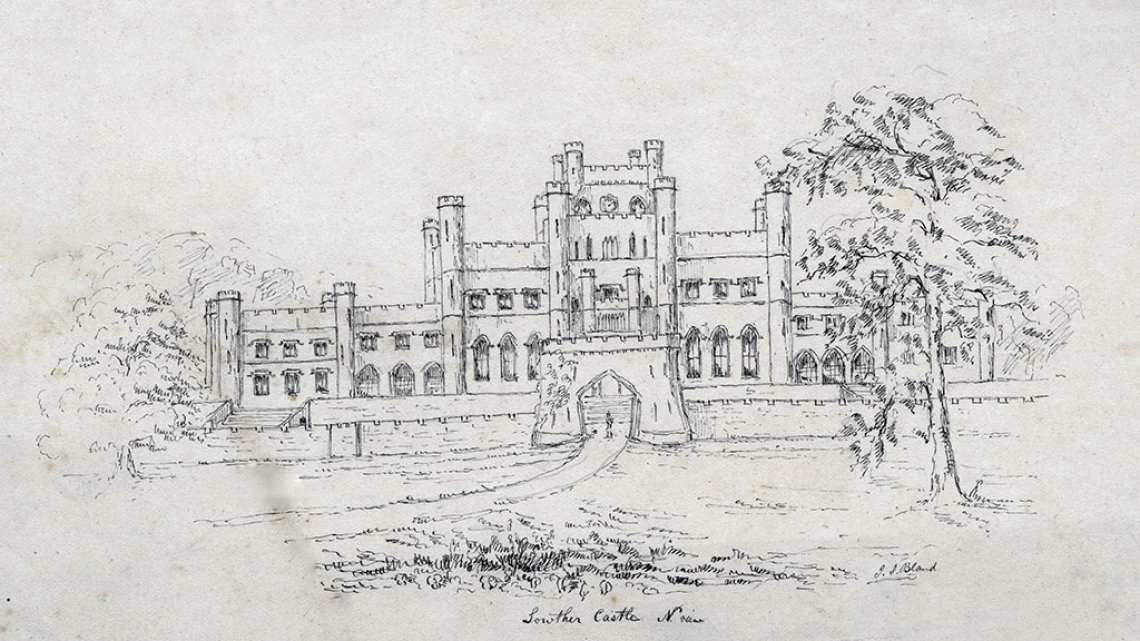Thompson family papers

Sketch of a castle, undated.
Collection area: Political Affairs
Collection dates: 1834-1864 (bulk 1861-1864)
The collection consists mainly of letters, 1861-1864, from James Thompson to his wife Charlotte Thompson. These are firsthand accounts of army life and Civil War battles, and are written from Illinois, Tennessee, and Mississippi. Other letters include some written to Bowman and Elizabeth Thompson, from son, Robert; most are from Missouri before he died there in 1861. Earlier correspondence, 1851-1858, contains letters to Bowman from his sister, Jane Thompson Bland, in England. Bowman's copies of the English wills of his parents and siblings are present, dating from 1840-1856. Two original drawings depict Lowther Castle, the Thompson family castle in England, and Askham Church, Westmoreland County, England. An 1834 Ohio deed is also present.
Bowman Thompson, 1811-1865, was born in Northumberland County, England. He immigrated to the United States about 1830 and subsequently settled on a farm in Summit County, Ohio. In 1834, he married Elizabeth Cannon, daughter of John and Elizabeth (Gilchrist) Cannon. They had five sons and two daughters.
Two of the sons, Robert and James, fought for the Union during the Civil War. Robert Thompson, -1861, served in Company G of the 37th Illinois Regiment Infantry, commonly known as "Fremont's Rifles," and was involved in Fremont's attempt to subdue a small militant force in southwest Missouri. On December 5, 1861, Rober was reported missing.
James Thompson, 1840-1912, was born in Summit County, Ohio where he received a common-school education. He married Charlotte S. Oliver on January 1, 1861 before enlisting with Company L, 4th Illinois Volunteer Cavalry unit on January 13. During the Civil War, James served at Corrinth, Massachusetts, and also was with his regiment during the battle of Coffeeville. After completing his term of enlistment, he was mustered out in October 1864, having attained the rank of Commissary Sergeant. He resumed his occupation as a farmer. In subsequent years, he also held the posts of Collector, Supervisor and Postmaster. He moved to Grenola, Kansas in 1905.
A collection guide explains what's in a collection. New to using our collections? Learn how to use a collection guide.
Collection guideAccess this collection
Visit us in person to access materials from this collection. Our materials are one-of-a-kind and require special care, so they can’t be checked out or taken home.
How to cite
Learn how to cite and use materials from Special Collections in your research.
